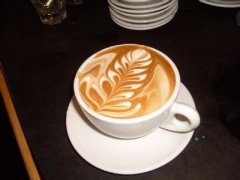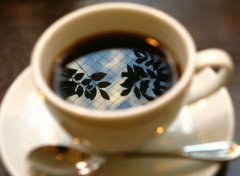Filter paper hand brewed coffee the simplest coffee brewing method
The simplest way to make coffee. Filter paper can be discarded immediately after use, which is more sanitary and easy to clean up. The amount of boiling water and the injection method can also be adjusted. One person can also brew, which is the best way to brew a small number of people.

About utensils
The drip can be divided into one hole and three holes. Three holes are used here. The spout for injecting boiling water should be small, so that the boiling water can be poured vertically on the coffee powder, which is more appropriate.
The key points of brewing
1. Coffee powder is about 10-12 grams per person, while boiled water is 120 grams.
two。 For those who like light coffee, the amount of powder is about 8 grams per person.
3. For those who like bitter taste, the amount of powder can be 12 grams per person and fully boiled.
4. The kettle for hot water injection is easier to operate if it is injected for about seven or eight minutes, and the amount of boiling water is prepared according to the number of people.
5. Heat the beaker without boiling it and pour it into the coffee cup.
6. Do not drop the filtered extract to the last drop (if all the drops are finished, there may be miscellaneous smells or impurities, etc.).
program
The ① and the next part of the filter paper are folded along the seam and put into the drip.
②, spoon the ground coffee powder according to the number of people (about 10-12g per person) into the drip, and tap a few more times to make the surface flat.
③, boil the water in a teapot, pour it into a small-nozzle kettle, gently pour the boiled water into the center, and slowly spiral the boiling water into the coffee powder until it is covered with coffee powder. Be sure to pour it in slowly.
④, in order to extract the delicious ingredients, steam the inflated coffee powder (stay for about 20 seconds).
⑤, the second boiled water, is slowly injected from the surface of the coffee powder. The amount of water injected must be consistent with the amount of coffee liquid extracted, and the amount of boiling water filtered must be kept at a certain level.
⑥, the extract can be stopped when it reaches the number of parts, and the state of boiling water left in the filter paper will be discarded.
Important Notice :
前街咖啡 FrontStreet Coffee has moved to new addredd:
FrontStreet Coffee Address: 315,Donghua East Road,GuangZhou
Tel:020 38364473
- Prev

Preparation of flannel filter before brewing
The coffee brewed with flannel filter is the most mellow and delicious. However, special attention should be paid to the arrangement and storage of the filter, otherwise the taste of the coffee will be low. Preparation before brewing 1. Coffee powder expands after boiling water is injected, so choose a slightly larger strainer. two。 Make the outside of the filter, fully twist the water off the wrinkles and straighten it out. A new method for the safekeeping and use of flange filter screen
- Next

Steps in the process of making ice-brewed coffee
The characteristics of drip coffee water drip filter pot originated in the Netherlands, is the best choice for making iced coffee. The most special thing about waterdrop coffee is that cold water is completely used in the process of coffee extraction. In general, when making, it will let the cold water deep bake at the rate of 7 drops in 10 seconds, and grind the coffee powder carefully, so that the coffee can be slowly extracted through cold water.
Related
- Beginners will see the "Coffee pull flower" guide!
- What is the difference between ice blog purified milk and ordinary milk coffee?
- Why is the Philippines the largest producer of crops in Liberia?
- For coffee extraction, should the fine powder be retained?
- How does extracted espresso fill pressed powder? How much strength does it take to press the powder?
- How to make jasmine cold extract coffee? Is the jasmine + latte good?
- Will this little toy really make the coffee taste better? How does Lily Drip affect coffee extraction?
- Will the action of slapping the filter cup also affect coffee extraction?
- What's the difference between powder-to-water ratio and powder-to-liquid ratio?
- What is the Ethiopian local species? What does it have to do with Heirloom native species?

